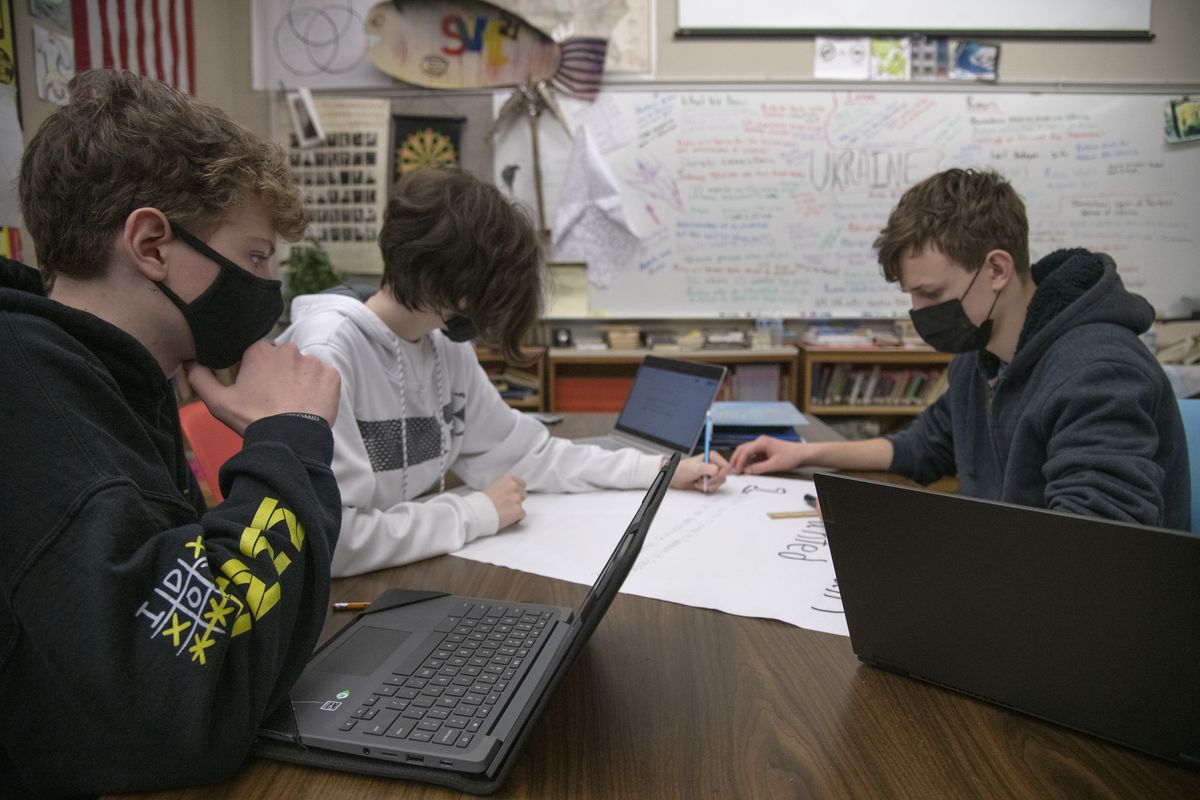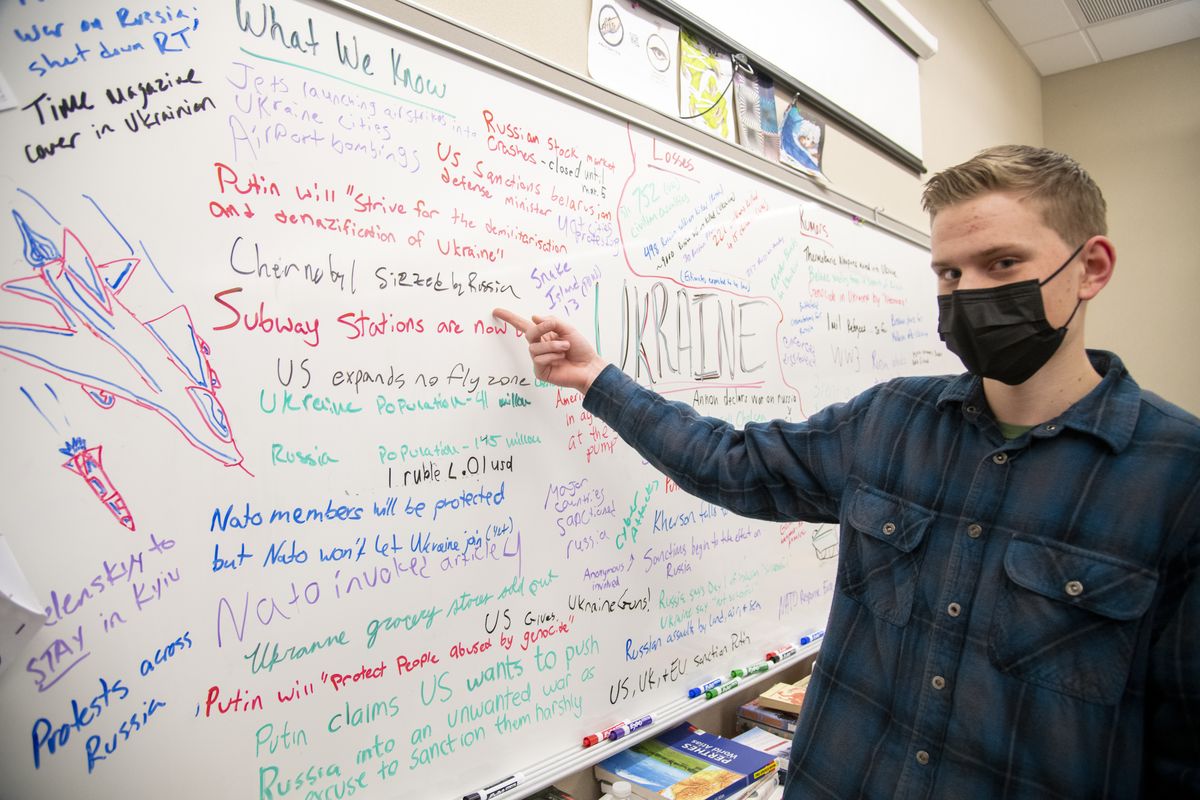‘They’re paying a lot of attention’: What local kids are learning from the war in Ukraine
Kaelan Conroy, 15, left, Rose Spessard, 16, and Peter Erickson, 16, work on a poster about World War I on Thursday in their combination English/World History class in front of a whiteboard filled with mentions of news, rumors and propaganda coming out of the war in Ukraine in a classroom at Spokane Valley Tech high school. (Jesse Tinsley/THE SPOKESMAN-REVIEW)Buy a print of this photo
As war broke out last month in Ukraine, high school social studies classes suddenly became a lot more relevant.
At Spokane Valley Tech, teacher Tyler Robbins was inundated with questions from worried high school seniors.
Their first two were no surprise: “Is this going to be World War III?” and “Am I going to get drafted?”
Once the panic had subsided, Robbins saw the chance to engage students in the lessons of history as it unfolded.
“They’re paying a lot of attention to this,” said Robbins, who has been teaching for six years at SVT, which is part of the Central Valley School District.
These are exciting, albeit challenging, times to be a high school history teacher. From divisive politics to the pandemic and now the biggest conflict in Europe since World War II, real-world events have captured teens’ attention.
In schools across the country, the crisis offers teachers an opportunity to help teach the relevance of world affairs for American youth.
“In order to be an informed citizen, one needs to be globally literate,” said Richard Haass, the president of the Council on Foreign Relations, a nonprofit think tank that focuses on international relations and foreign policy.
At Spokane Valley Tech, the challenge was to distill all the news reports, social media reports and questionable videos into something coherent, something “verifiable,” Robbins said.
Robbins went old school, using a large white board that dominates the back of the classroom. Soon, it filled with information – facts, numbers and rumors.
Sometimes, rumor becomes fact and moves to another part of the board. On other occasions, numbers such as casualty figures are proven wrong.
“The numbers keep evolving,” said Robbins, who had to take some of them down because they were later proven false.
Less than two weeks into the conflict, both sides are employing propaganda for worldwide consumption magnifying their triumphs while demonizing the enemy.
CNN and other news organizations reported that people are sharing altered screenshots, fake podcasts and other hoaxes.
Robbins and his classes are already ahead of the issue.
As the war began, they were studying propaganda during the World War I era and its aftermath. They also examined the politics and the aftermath of the 1919 Treaty of Versailles.
That requires background knowledge of geographic and historical context. While Robbins acknowledged that some students still can’t find Ukraine on a map, others have delved deeply into the subject.
Aidan Scott, a senior, had done his homework ahead of time.
“I was checking the news every hour,” Scott said. Quickly, he saw the conflicting accounts of the war and resolved to apply a skeptical lens to any news that wasn’t reported by multiple sources.
Kaelan Conroy, a sophomore, said that most of his prior knowledge had come from social media.
“I went to the Ukrainian government website, but it was in Ukrainian, so that didn’t work,” Conroy said.
Broadening his research, Conroy was exposed to the grisly details of war, including Russia’s use of vacuum bombs, which suck the oxygen from an area to create a large explosion.
At Ridgeline High School in Liberty Lake, history teacher Kathryn Teske was quick to grasp the bigger lesson.
“When events like this happen, this is where it’s really important to understand the historical background,” Teske said.
When the crisis broke, Teske’s classes were enmeshed in a study of World War II and the Cold War – events that profoundly affected Eastern Europe.
Like other teachers, Teske has worked hard to help students take a discerning look at the news, especially when it appears first on social media.
“We try to look at where that information is coming from,” Teske said. “What would be the purpose of putting that information out there, and what is their intended audience.”
However, technology also offers a chance to compare information.
“In the old days, you read vertically, kept reading down the page,” Teske said. “Today, we should be reading horizontally, going to another tab and asking, where did that come from?”

